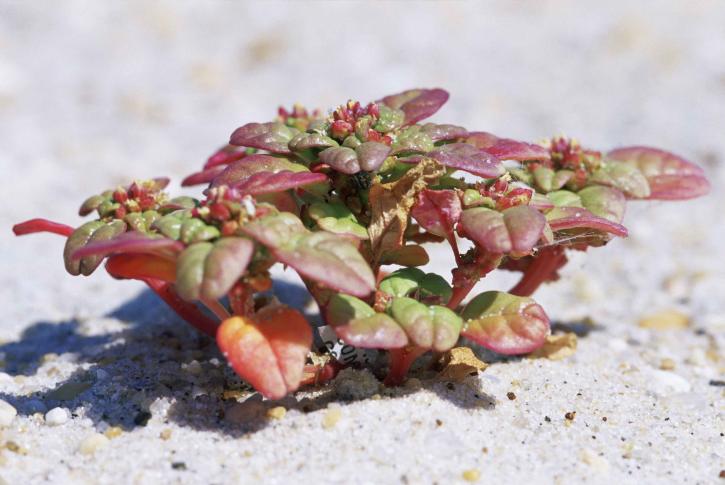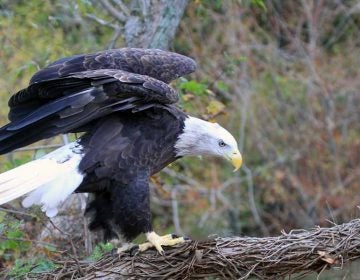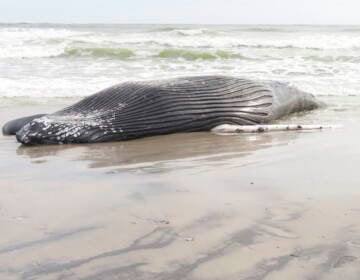N.J. officials report 600% increase of endangered plant along state’s beaches
An annual plant census along New Jersey's beaches reveals a significant surge of a federally threatened and endangered plant species, state officials announced.

A seabeach amaranth plant. (Wikimedia Commons)
An annual plant census along New Jersey’s beaches reveals a significant surge of a federally threatened and endangered plant species, state officials announced.
Seabeach amaranth is an annual, low-growing plant with fleshy, spinach-like leaves and reddish stems that produce yellow flowers starting in June and July, according to the New Jersey Department of Environmental Protection. The seeds are durable and can dispersed long distances by waves and wind.
In 2019, state biologists counted 7,195 plants — a more than 600% increase from the 2018 total of 1,053 — of which 1,591 are in Island Beach State Park, where only 307 were found in 2018. U.S. Fish and Wildlife Service grants fund the annual plant survey.
They said the resurgence is “particularly remarkable” since the plant had not been observed in the state from 1913 to 2000 and was considered lost from New Jersey flora. It was rediscovered in 2000 near Sandy Hook following a beach replenishment operation.
“I am very pleased that the statewide surge of seabeach amaranth experienced in 2018 has been far exceeded this year,” NJDEP Commissioner Catherine R. McCabe said. “Our biologists indicate that while the increase can be the result of many different factors, it could not have occurred without the presence and structural integrity of the habitat required by this species.”
In Island Beach State Park, state biologists have created special protection zones for seabeach amaranth and other rare plant species, according to the NJDEP.
It has proven successful, where prior to the 2016 expansion of protections throughout the park, an average of seven seabeach amaranth plants occurred annually. Since then, the average surged to 479 plants annually.
The surge coincides with the return of the federally threatened piping plover shorebird in 2016 following a 27-year absence. 2019 was the most successful year for the bird in the park.
WHYY is your source for fact-based, in-depth journalism and information. As a nonprofit organization, we rely on financial support from readers like you. Please give today.




